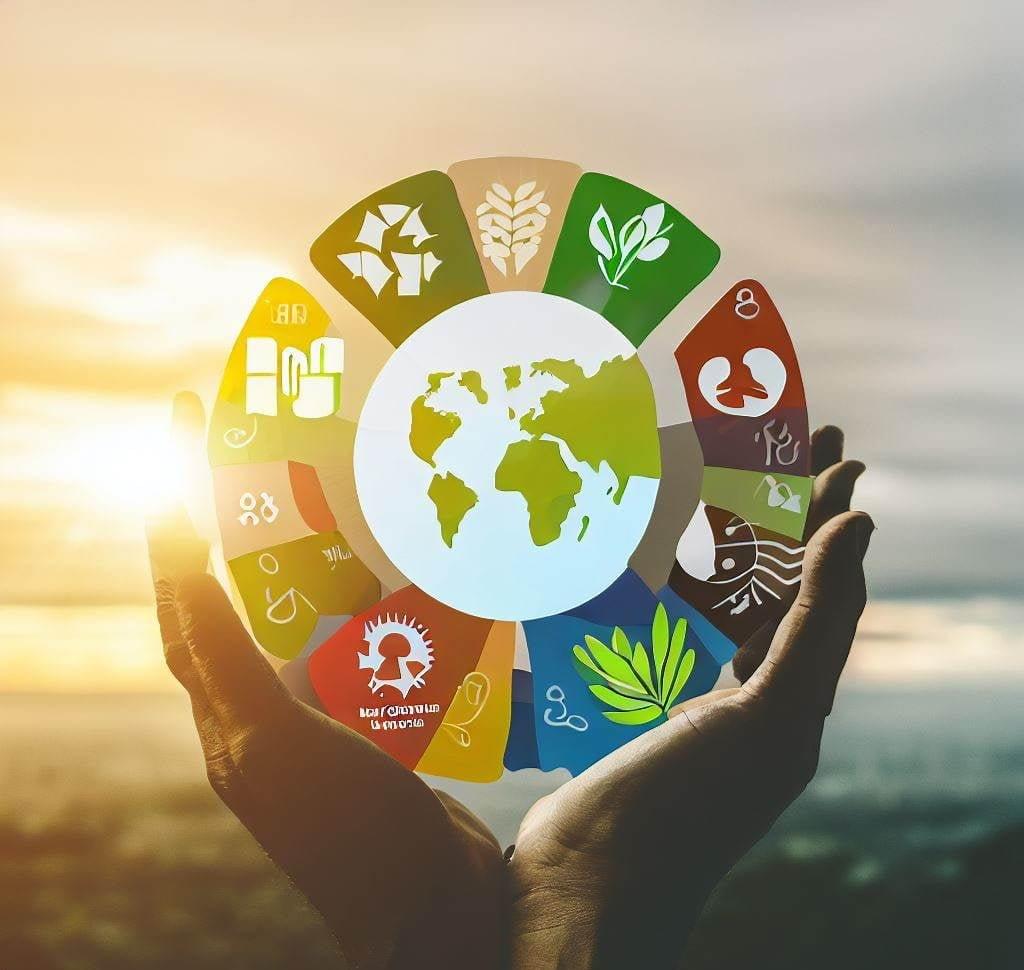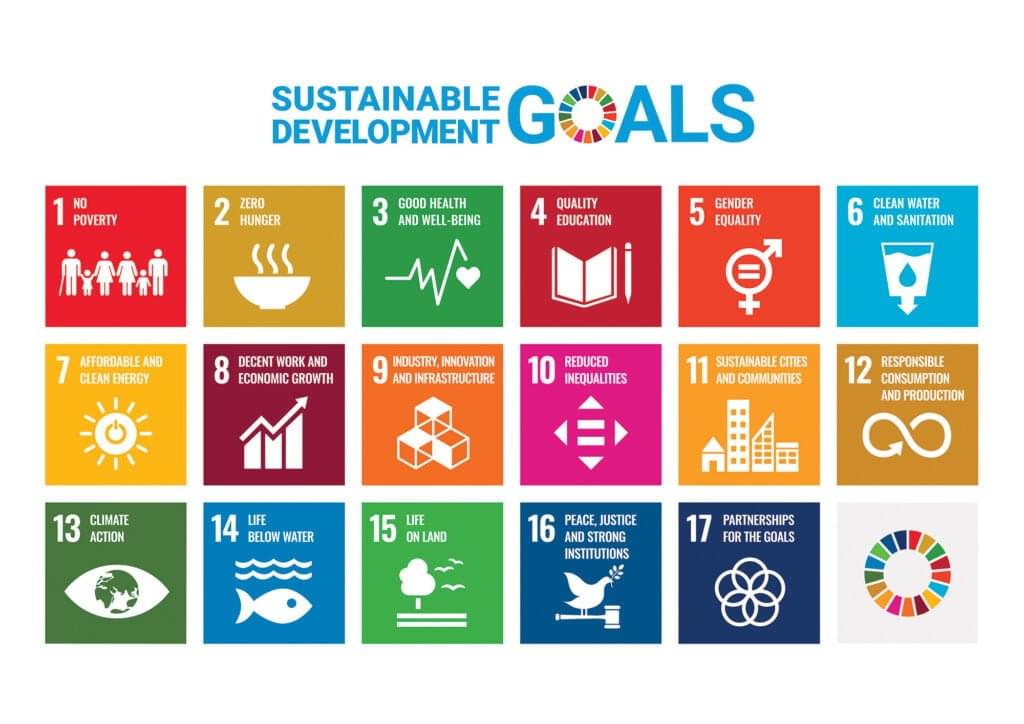This blog will provide you knowledge about the concept of Economic Growth and Sustainability. Firstly you will get to know the definition of Sustainable Development and Economic Growth. Secondly, you will explore the Pillars of Sustainability. At the end, you will go through the 17 Goals of Sustainable Development. You will get to know about Economic growth and sustainability with goals of sustainability in this blog.
Sustainable Development
Sustainable development is the idea that human societies must live and meet their needs without compromising the ability of future generations to meet their own needs. It is as an approach to developing or growing by using resources so as to renew or continue to exist for others.
1: Example of sustainable Development:
Using recycled materials or renewable resources when building is an example of sustainable development.
The official definition of sustainable development was developed for the first time in the Brundtland Report in 1987. It is the organizing principle for meeting human development goals while at the same time sustaining the ability of natural systems to provide the natural resources and ecosystem services upon which the economy and society depend.
Sustainable development encourages us to conserve and enhance our resource base in order to gradually change the ways in which we develop and use technologies. Countries must be allowed to meet their basic needs of employment, food, energy, water and sanitation.
It improves the quality of human life so as to enable the communities to care for their own environment. It minimize the depletion of natural resources.
2: Economic growth:
The process by which a nation’s wealth increases over time. Economic growth is an increase in the production of goods and services, compared from one period to another.
It occurs when the real GDP of a country rises or its productive potential increases.
Economic growth is only concerned with increasing real GDP or productive potential.
It does not include in a variety of other factors that influence the standard of living in a country economic growth so as to increases state capacity and the supply of public goods. As people earn higher incomes and spend more money, this enables people to exit poverty and gain improved living standards. We can attain sustainability by maintaining economic growth along with the goals of sustainable development in order to live a sustainable life.
Pillars of Sustainability:
These sustainability pillars helps us to maintain economic growth with the help of 17 goals of sustainability. There are three basic pillars of Sustainability:
1: Economic Sustainability:
“Economic sustainability refers to practices that support long-term economic growth without negatively impacting social, environmental, and cultural aspects of the community.”
Economic sustainability includes job creation, profitability, and proper accounting of ecosystem services so that it implies a system of production that satisfies present consumption levels without compromising future needs. In this we focus on three types of capitals; natural capital, social capital and human capital. Natural capital includes the resources and services that are available to us naturally and so they counts a lot in maintaining economic sustainability.
Social capital includes the networks of relationships among people which lives and work in a society. Human capital includes the economic value of a worker’s experience and skills. All these capitals helps to maintain economic sustainability to improve and maintain economic sources for present as well as future generations. Economic sustainability is the state where economic growth along with sustainability goals reach the eco-friendly development.
2: Environmental Sustainability:
“Environmental sustainability is ensuring the avoidance of the depletion of natural resources in order to maintain ecological balance while meeting our needs for water, food, shelter, and social interaction.”
Environmental sustainability requires maintaining natural capital as both a provider of economic inputs and an observer of economic outputs. It is defined as responsible interaction with the environment to avoid depletion or degradation of natural resources and allow for long-term environmental quality. When we talk about environmental sustainability, they are talking about the responsibly managing natural resources so that they will still be available in the future. This includes both limiting use of natural resources and protecting them from degradation.
3: Social Sustainability:
“Social sustainability can be defined as specifying and managing both positive and negative impacts of systems, processes, organizations, and activities on people and social life.”
It is a measure of human’s welfare. In this we focus on increasing the standards of living of people who lack shelter, clean water, and adequate food to survive. Additional elements for consideration are population growth, human health, cultural needs, and a clean environment in which we live. Social sustainability is the neglected component of sustainability. It is much difficult to define and is the weakest among the three pillars. This addresses the ways in which members of a community lives their lives and interact with each other and so this will help to attain sustainable lifestyle. It intervenes the maintenance of basic human needs along with the exercising of political, economic, and social freedoms.

17 Goals of Sustainable Development:
The sustainable development goals are a collection of 17 interlinked global goals designed to be ‘Blueprints to achieve a better and more sustainable future for all’ .The SDGs were set up in 2015 by United Nations General Assembly and are intended to achieve by the year 2030. We can relate sustainable development and economic growth by following the goals of sustainability.
These 17 goals are as the following:
1. No Poverty:
Poverty is actually not having the enough money to meet basic needs including food, clothing and shelter. In Pakistan in 2015 there is 24.3 percent poverty. It ensure that develop and implement rapid and sustained economic growth policies and programs in areas such as health, education and nutrition. 10 percent increase in the average income reduces the poverty by 20.3 percent.
2. Zero Hunger:
Making sure that all people especially children have sufficient and nutritious food all the year. This includes promoting sustainable agriculture, supporting small scale farmers and equal access to land, technology and markets.
3. Good Health and Well beings:
Ensure healthy lives and promote well beings for all at all stages. Over last 15 years the number of childhood deaths has been cut in half which proves it is possible to win the fight against diseases. The new goals for worldwide good health promote healthy life style, preventive measures and modern, efficient health care for everyone.
4. Quality Education:
Ensure inclusive and equitable education and promote lifelong learning opportunities for all.
5. Gender Equality:
It is also called as the sexual Equality. Equal ease of access to the resources and opportunities regardless of gender, including economic participation and decision making and the state of valuing different behavior and needs equally regardless of gender.
6. Clean Water and Sanitation:
Ensure availability and sustained management of water and sanitation for all. Improve water quality by reducing the pollution, minimize the release of hazardous chemicals and sustainably increasing recycling and reuse globally. If clean water and sanitation services to people, so we can get sustainable living on Earth.
7. Affordable and Clean Energy:
Ensure access to affordable, reliable, sustained and modern energy to all. Investing clean energy sources such as Solar Energy, wind energy and Thermal energy. Solar energy is the cheapest energy sources.
8. Decent Work and Economic Growth:
For a society’s sustainable economic development and well-being it is crucial that economic growth generates not just any kind of job but Decent job. Decent job is that where work provide fair income, workplace security and social protection and allow flexibility of working arrangements and hours.
9. Increase Industry, Innovation and Infrastructure:
A functioning and resilient infrastructure is the foundation of every successful community in order to meet future challenges, our industries and infrastructure must be upgraded. For this, we need to promote innovative sustainable technologies and ensure equal and universal access to information and financial markets. This will bring prosperity, create jobs so as to make sure that we build stable and prosperous societies across the globe.
10. Reduce Inequality:
Income inequality requires global solutions. This involves improving the regulation and monitoring of financial markets and institutions, and so encouraging development assistance and foreign direct investment to regions where the need is greatest. And this tells us that every person is equal to other.
11. Mobilize Sustainable Cities and Communities:
Making cities safe and sustainable means ensuring access to safe and affordable housing, and upgrading slum settlements. It also involves investment in public transport, creating green public spaces, and improving urban planning and management in a way that is both participatory and inclusive.
12. Influence Responsible Consumption and Production:
If we want to achieve sustainable development and growth than we should use natural resources according to our need we should consume and produce products according to our need.
13. Organize Climate Action:
As we know that climate change is a major issue nowadays, so we should use proper steps to reduce global warming and take care of our climate.
14. Develop Life below Water:
This goal tells us to conserve our marine and water species. We should not kill them for our economic development so we should take proper steps to conserve water species.
15. Advance Life on Land:
We should conserve our land species also. The urgent action must be taken to reduce the loss of natural habitats and biodiversity which are part of our common heritage in order to support global food and water security, climate change mitigation and adaptation, and peace and security.
16. Guarantee Peace, Justice, and Strong Institutions:
Peace, stability, human rights and effective governance based on the rule of law are important for sustainable development. We are living in a world that is increasingly divided. Some regions enjoy sustained levels of peace, security and prosperity while others fall into seemingly endless cycles of conflict and violence. This must be addressed.
17. Build Partnerships for the Goals:
The SDGs can only be realized with strong global partnerships and cooperation. The world is more interconnected than ever. Improving access to technology and knowledge is an important way to share ideas and foster innovation. Coordinating policies to help developing countries manage their debt, as well as promoting investment for the least developed, is vital for sustainable growth and development.
Conclusion:
As we know that economic growth is causing great threats to natural environment by exploiting natural resources and increasing Green House Gases (GHGs). Sustainability is the solution to this problem. If we will use all the resources and grow economically in a sustainable manner, we can make economic growth possible without harming the natural environment and meet the needs of resources for present as well as future generation.

Sustainable Development
To learn about more topics, Click the links below:
Comments